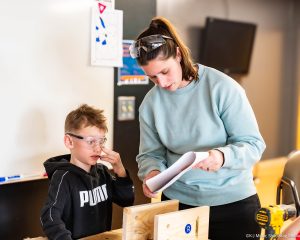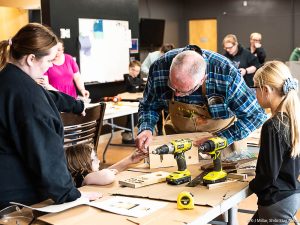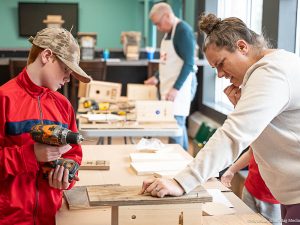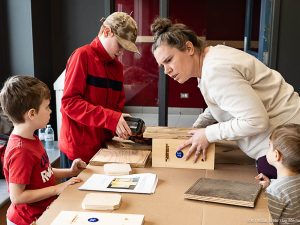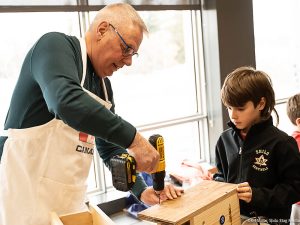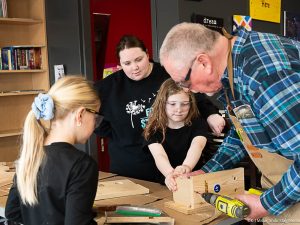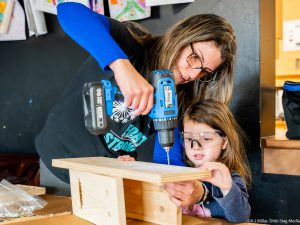
Reid Westwood eyes up the configuration of a bluebird nesting box he constructed as part of OPERATION Bluebird on April 8 in a collaborative program between the non-profit Friends of the Bluebirds and the Shilo MFRC. (Photo: K-J Millar/Shilo Stag Media)
K-J Millar
Shilo Stag Media
OPERATION Bluebird is in full flight with more than 25 CFB Shilo military youth, family members and volunteers building habitats on April 8 to protect the avian species.
OPERATION Bluebird is a collaboration between the Military Family Resource Centre (MFRC) and the Friends of the Bluebirds (FOTB) aimed at youth to alleviate some distress on the declining species of birds found in the Shilo area by constructing new nesting boxes for them.
The fun and educational family program helps to preserve the Manitoba Eastern Bluebird and Mountain Bluebirds, which have declined in population by 59 percent in the past 50 years, Sherry Punak-Murphy, CFB Shilo Biologist, told Shilo Stag News.
Volunteers like Phil Weiss, chairman of the FOTB and member George Michniewicz, guided the group participants in constructing the cavity nesting boxes to be installed along a fence close to the Base.
“The birds are starting to come back from their migration. The fun is monitoring throughout the nesting season, during the summer, and seeing what’s happening inside the boxes,” Weiss said.
Bluebirds are a medium-sized insectivore of the thrush family. The females lay four to six eggs on average and will usually brood two or three times a year. The males will sing and flap their wings to attract a female mate.
They are territorial birds and prefer living in grasslands and scattered trees. They can become victim to area predators such as snakes, cats and raccoons. Bluebirds can even have their nests pillaged by other competing birds like crows and swallows, who will take over the nest, kill the eggs by smashing them and sometimes kill the adults.
Weiss said the boxes FOTB installed across the Westman area are 90 percent occupied. A significant decline in species has been noted since World War Two, which is a global phenomenon, he said.
“Are we going to stop the decline? Probably not. Are we going to slow the decline? Yes.”
Weiss said ‘citizen science’ is used where volunteers of all ages track and monitor the happenings in the boxes. The data is then collaborated into an annual report sent to public and private ornithologists.
The club looks after 1,500 to 2,000 in the Westman area from the Saskatchewan border to the US border right through the Pembina Valley.
For people interested in more information, participating by monitoring a box, or hosting a box on their fence, contact can be made with the club through its Facebook page – Friends of the Bluebirds.
“The boots on the ground, the citizen science, is a fun hobby. It’s healthy – you are out on the great eastern prairie. It’s meaningful and worthwhile. For us, an organization that is more than 50 years old, we are excited in the succession with the new partnership created with the MFRC and the youth of the Base.”
